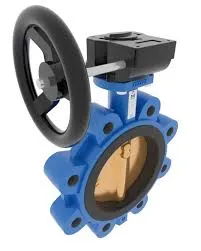डिस . 25, 2024 02:02 Back to list
Non-Rising Stem Gate Valve Design for Enhanced Performance and Reliability in Fluid Control Systems
Understanding Non-Rising Stem Gate Valves Design, Applications, and Benefits
Gate valves are essential components in various piping systems, serving the critical function of controlling the flow of liquids and gases. Among the various types of gate valves, the non-rising stem gate valve stands out due to its unique design and operational advantages. This article delves into the characteristics, applications, and benefits of non-rising stem gate valves, providing a comprehensive understanding for engineers and industry professionals.
Design Characteristics
Non-rising stem gate valves are designed with a stem that does not move upwards when the valve is opened. Instead, the gate itself rises within the valve body to create an opening for fluid flow. This characteristic makes non-rising stem gate valves particularly suitable for installations in confined spaces where the vertical clearance is limited. The design typically incorporates a wedge-shaped gate that provides excellent sealing capabilities and ensures minimal leakage when the valve is closed.
Moreover, these valves feature a robust construction, often made from materials such as carbon steel, stainless steel, or bronze, depending on the specific application requirements. The choice of materials contributes to their durability and resilience in harsh operating environments. Non-rising stem gate valves are also equipped with various sealing technologies, including elastomeric seals and metal-to-metal seals, to enhance their performance and reliability.
Applications
The versatility of non-rising stem gate valves makes them suitable for a wide range of applications across different industries. Some common applications include
1. Water Supply and Distribution Non-rising stem gate valves are frequently used in municipal water supply systems for controlling the flow of water. Their reliable sealing capability ensures that leaks are minimized, which is crucial for maintaining water quality and system efficiency.
2. Oil and Gas Industry In the oil and gas sector, these valves play a vital role in upstream and downstream processes. They are used in pipelines, refineries, and processing plants to manage the flow of hydrocarbons safely.
3. Power Generation In power plants, non-rising stem gate valves are used for steam and water control, particularly in cooling systems and feedwater lines. Their ability to handle high-pressure conditions makes them ideal for such applications.
non rising stem gate valve

4. Chemical Processing The chemical industry often requires valves that can withstand aggressive substances and high temperatures. Non-rising stem gate valves made from corrosion-resistant materials are extensively used in handling various chemicals and fluids.
Benefits
The non-rising stem gate valve design offers several advantages that enhance its appeal for industrial applications
1. Space Efficiency One of the significant benefits of non-rising stem gate valves is their compact design, which allows for installation in spaces where vertical clearance is limited. This feature is particularly advantageous in retrofit applications or when dealing with overhead constraints.
2. Reduced Maintenance The design of non-rising stem gate valves minimizes the wear and tear on the stem and packing, as there is less exposure to the external environment. This leads to lower maintenance requirements and a longer service life, making them a cost-effective choice.
3. Bidding for Reliability Non-rising stem gate valves provide a tight shut-off, ensuring minimal leakage in both open and closed positions. This reliability is crucial in industries where maintaining system integrity is vital.
4. Versatile Configuration These valves are available in various sizes, configurations, and material options, making them adaptable for a wide array of system requirements. Whether for high-pressure applications or corrosive environments, there is likely a non-rising stem gate valve that fits the bill.
5. Ease of Operation The straightforward operation of non-rising stem gate valves allows for quick and easy accessibility for operators. The absence of rising movement simplifies the actuation process, especially in cluttered environments.
Conclusion
Non-rising stem gate valves are an integral part of many industrial systems, offering a blend of space efficiency, reliable performance, and versatility. Their unique design caters to specific needs in environments where vertical space is at a premium, making them a preferred choice across various sectors. Understanding their characteristics, applications, and benefits can help industry professionals make informed decisions when selecting valves for their systems. In essence, the non-rising stem gate valve stands as a testament to the innovation and practicality found within modern engineering solutions.
Share
-
Reliable Wafer Type Butterfly Valves for Every IndustryNewsJul.25,2025
-
Reliable Flow Control Begins with the Right Ball Check ValveNewsJul.25,2025
-
Precision Flow Control Starts with Quality ValvesNewsJul.25,2025
-
Industrial Flow Control ReliabilityNewsJul.25,2025
-
Engineered for Efficiency Gate Valves That Power Industrial PerformanceNewsJul.25,2025
-
Empowering Infrastructure Through Quality ManufacturingNewsJul.25,2025